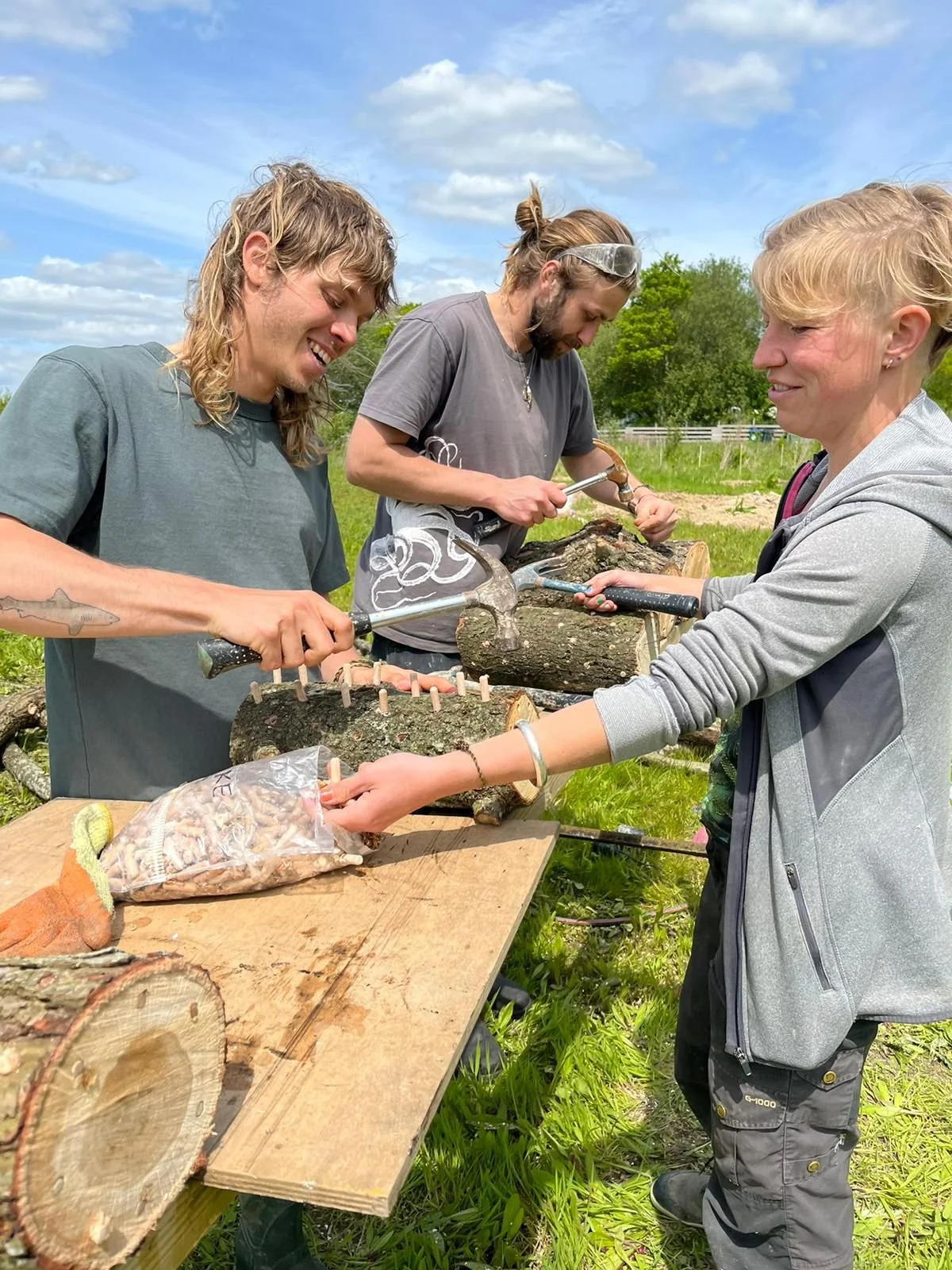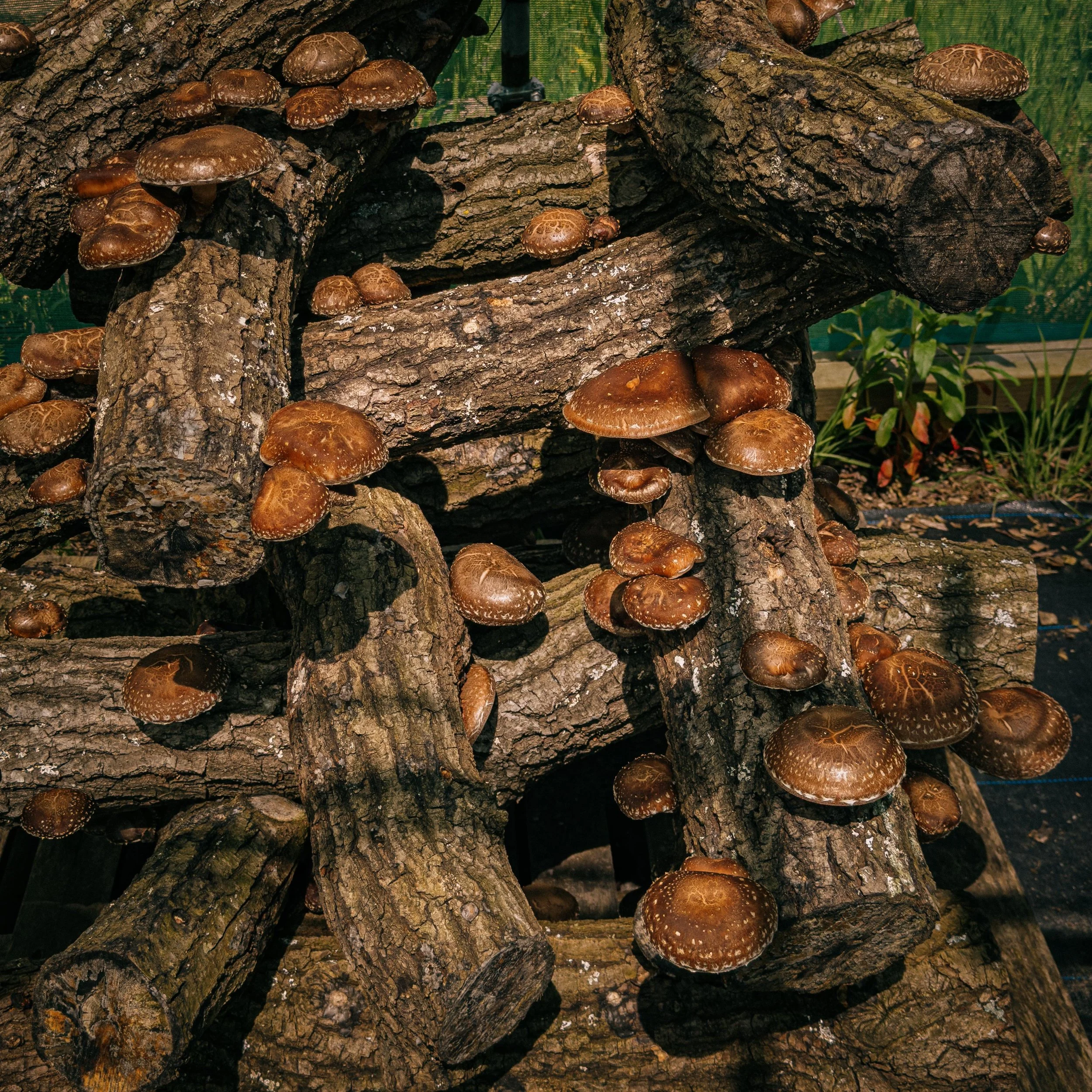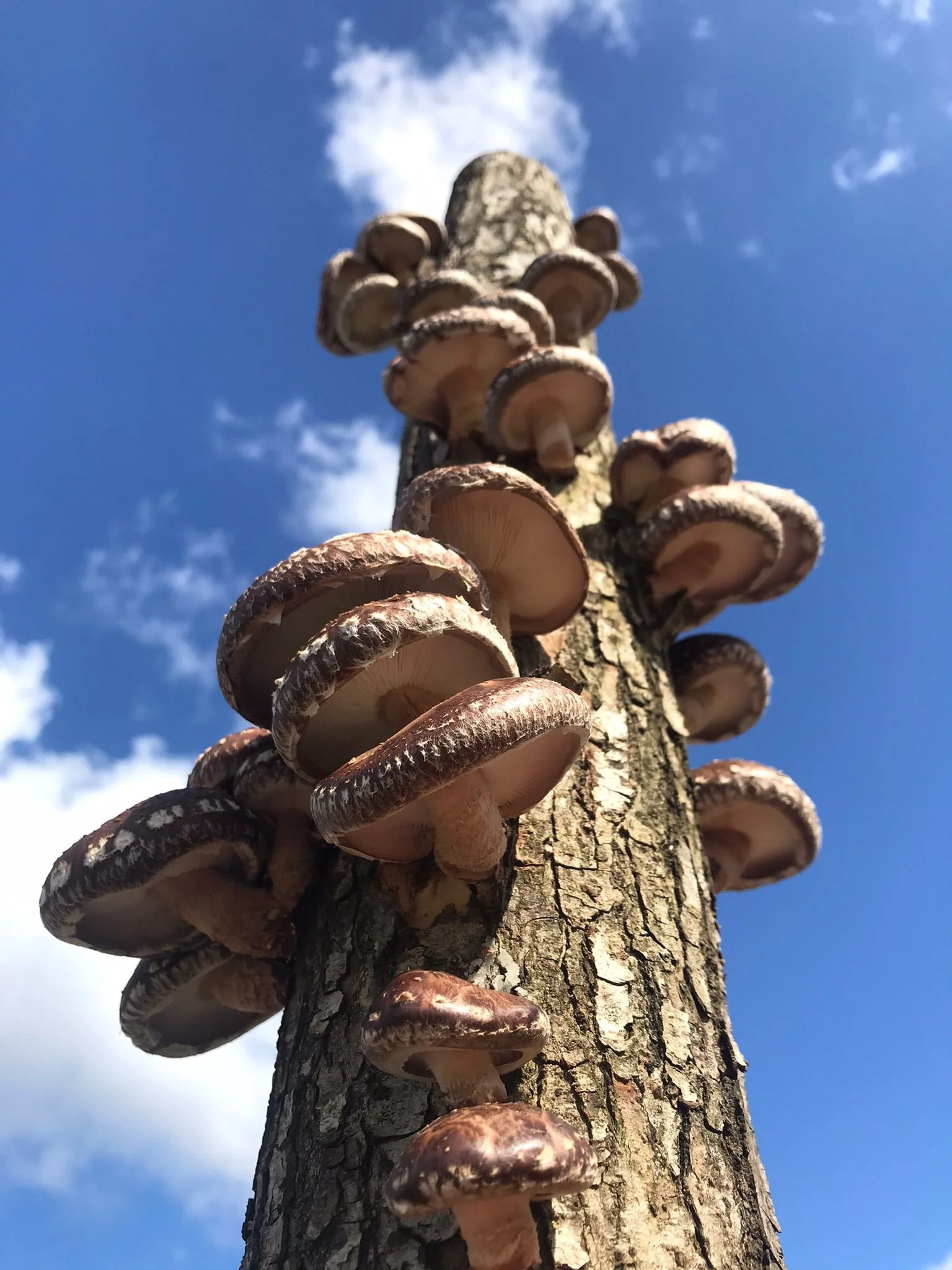Goldon Horn Farm Interview
In East Sussex, between arable fields and patches of native ancient woodland, lies Golden Horn Farm—a mixed mushroom farm run by James Dodson. In addition to cultivating exotic woodland mushrooms like shiitake and lion’s mane, the farm is also home to a rewilding project taking place on its grounds. They aim to create a teaching facility on the farm, bringing the local community and beyond closer to the fascinating world of mushroom cultivation and foraging walks.
We spoke with James to gain insights into the mushroom farming industry and to hear his thoughts on the possibilities—and challenges—of achieving sustainability within it.
How do you integrate foraging with mushroom farming? What inspired this approach?
The goal is to restore balance by working with nature. Foraging builds a relationship between chef and forager, and shortens the supply chain. But for larger needs, farming comes into play. We try to combine both—farming mushrooms like oyster, lion’s mane, and shiitake in ways that support the environment and community.
Are there specific reasons you chose those mushroom varieties?
Absolutely. Each has unique benefits and challenges. For example, indoor growing gives higher yields, but log-growing outdoors, while slower, produces richer flavours and uses less waste. Each log saves about 50 plastic bags over its lifecycle, which is a big step toward sustainability.
For the environment, which is better: farming or foraging mushrooms?
It really depends. Foraging can be sustainable when done responsibly, and it strengthens connections between chefs and foragers, creating a more localised network. Farming, however, can also be beneficial if done thoughtfully—especially if we reuse materials and minimise waste.
How can chefs support sustainable mushroom farming practices?
The most important thing is to ask questions about sourcing. Knowing where the substrate comes from helps ensure sustainable practices are being used.
Could you explain the environmental impact of substrates and why it matters for mushroom quality?
Substrate sourcing can greatly impact both sustainability and flavour. Using substrates from renewable sources or waste products, like sawdust from oak, enhances the taste of mushrooms and lowers the environmental footprint.
What should chefs avoid when selecting mushroom suppliers? Are there specific farming practices to be wary of?
Conventional button mushroom production can be quite damaging due to its intensive compost use. In contrast, shiitake logs and bucket-grown oysters are much more sustainable. Supporting farms that minimise plastic and energy usage is key.
Where do you see the future of mushroom farming going?
Moving toward off-grid, outdoor production using renewable energy like solar and wind. This approach, with agroforestry and sustainable forestry practices, keeps us engaged in the work and connected to nature. There's a lot of potential in reducing plastic usage and improving energy efficiency within the industry.
Any final thoughts on scale and sustainability in mushroom farming?
Smaller-scale farms have the advantage of reducing environmental impact and fostering a strong community connection. By working with chefs willing to pay a premium for sustainably grown, flavorful mushrooms, we can keep pushing for better practices and tell the story of each mushroom from forest to plate.




